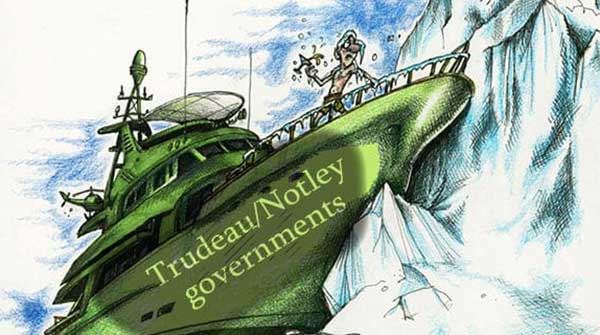Study on employment statistics sheds light on the economic challenges faced by Alberta under the Trudeau government
An examination of employment statistics in Alberta, conducted by the Frontier Centre for Public Policy (FCPP), has shed light on the economic challenges that Alberta has faced under the Trudeau government.
The study, Twelve Years of Labour in Alberta: A Tale of three political eras, has unveiled a significant transformation in Alberta’s economic performance. During Alberta’s last Progressive Conservative term, which coincided with a majority Conservative government at the federal level, compensation for Alberta employees surged impressively by 25 percent, outpacing the national growth rate of 15.7 percent. This period marked a thriving Alberta economy, showcasing the province’s dynamic economic landscape.
However, when the federal Liberals took office in November 2015 and the New Democratic Party (NDP) government, led by Rachel Notley, came to power in Alberta in May 2015, the province’s economic outlook underwent a substantial shift. Total compensation (wages and benefits) for Alberta employees has grown by only 13.4 percent over eight and a half years, while the rest of Canada has experienced three times that growth, reaching 48.1 percent. Notably, wages and salaries in mining and oil and gas extraction in Alberta grew by just 3.6 percent, in stark contrast to the national growth rate of 14.8 percent during the same period.

Lee Harding
 |
Lee Harding, a research fellow at the FCPP and the study’s author, pointed out that “Ottawa has looked at Alberta’s fossil-fuel-based economy with disapproval, and regulations aimed at constraining fossil fuel development and exports have taken a toll. Alberta, once a leader, has now fallen behind, outpaced threefold by the rest of Canada.”
The study also highlighted a trend in Alberta’s employment growth that raises concerns, said Harding. While Canada’s employment growth has paralleled its working-age population growth from October 2011 to November 2023, Alberta has faced a different reality. The number of people aged 15 to 64 in Alberta has grown 34.5 percent faster than its employment growth, exceeded only by Newfoundland and Labrador with a 36 percent gap. In contrast, Quebec has seen employment grow 36 percent faster than its population.
The report raised further concerns about workforce participation in Alberta, as many individuals have given up on finding employment. Over the past 12 years, non-participation rates in the workforce have surged by 63.9 percent for men and 39.8 percent for women in Alberta, compared to 26.2 percent and 18.2 percent respectively, nationally.
“Across the prairies, but most notably in Alberta, employment growth is lagging behind the growth in the working-age population. Quebec’s success in this area may reflect a more focused approach to immigration that prioritizes employment,” Harding said.
In addition, the study noted that Alberta has exhibited restraint in the growth of its provincial and municipal bureaucracies over the past 12 years, particularly during the NDP era when total private sector wages contracted. In contrast, the Trudeau government expanded the federal bureaucracy while the self-employed sector stagnated.
“Canada has only seen a marginal increase of 7,000 more self-employed individuals over the past 12 years, with 6,000 of them from Alberta. This unsustainable trend should raise concerns for policymakers across the country,” warned Harding.
Despite the challenges, Alberta has outperformed its provincial counterparts and national averages in various areas during the UCP era, such as growth in the working-age population, labour force, employment numbers, and full-time employment rates. However, the gap between working-age population growth and employment growth in Alberta continues to widen faster than in other provinces like British Columbia and Saskatchewan.
The study also highlighted that growth in wages in certain sectors in Alberta, such as agriculture, forestry, fishing, and hunting, experienced an impressive 82.5 percent increase. These sectors, along with healthcare and social services, were the only ones in which the growth in total wages and salaries exceeded the Canadian average.
Harding warns, however, about possible risks to Alberta’s resource-dependent economy stemming from the Trudeau government’s efforts to achieve net-zero carbon emissions. This initiative, expanding beyond the energy sector, could adversely affect agriculture, posing risks to both crops and livestock.
| Staff
The opinions expressed by our columnists and contributors are theirs alone and do not inherently or expressly reflect the views of our publication.
© Troy Media
Troy Media is an editorial content provider to media outlets and its own hosted community news outlets across Canada.

